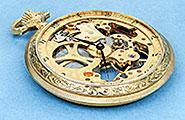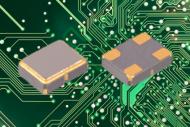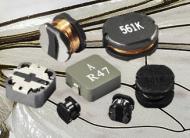Total Frequency Control News ....
Frequency accuracy, do we really need it? - September 2013

Precision crystal oscillators, typically high performance temperature compensated and oven stabilised crystal oscillators, are required to give accurate timing where the use of an atomic scale clock is not feasible. Accurate time information has been a constant requirement throughout human evolution, perhaps the most recognisable of the solutions accurate time measurement has made in the past is with the solution to longitudinal position. In the seventeen hundreds it had been well known for centuries that your position in latitude could be determined by measuring the apparent distance between the sun at noon and the horizon with reference to a table of declinations. Or if the night was clear certain stars and the horizon. What was not measurable with any degree of certainty was your position longitudinally.
After a particularly set of disastrous ship wrecks in the Scilly Isles in 1707 where some two thousand sailors of the British fleet lost their lives through an inability to accurately measure their position, the British government offered large monetary prizes for a method that could be ship borne and give an accurate measure of Longitude.
Measurement of Longitude was known to be a simple problem. If you could measure noon local time on board a ship and know the exact time at some reference point, typically Greenwich, then you could accurately calculate your position longitudinally. The great problem of the time was the accuracy of the time keeping instruments which were used to calculate the Greenwich local time. Even Isaac Newton stated that he doubted that a chronological device with the required accuracy could be built. The British government proposed three prizes for solving the Longitude problem, one for better than 60 nautical miles accuracy, one for better than 40 nautical miles accuracy and one for better than 20 nautical miles accuracy.
It is often wrongly reported that John Harrison won the 20 nautical mile prize with his pocket watch that was shown to keep time on a transatlantic journey to better than ten seconds. However vested interests and bickering amongst rivals ensured that the British government never paid out on any of its prizes.
John Harrison, an English carpenter with a strong interest in clock making, invented the marine chronometer. He came to the problem knowing that timekeeping on land, with sufficient accuracy for navigation, could be achieved using accurate pendulum long case clocks. These however were of no use in the marine environment. The constant ship motion, changes in pressure and humidity and the gravity changes caused by the earth thickening towards the equator all conspired to make pendulum designs ineffective. Once the accuracy of the timepiece is compromised and longitude is lost it can never be recovered. The key to solving the problem would involve a key understanding of environmental factors affecting the accuracy of the design. John Harrison solved the problems by inventing the use of a bi-metallic strip and caged roller bearings, that and the designs allowance on keeping the watch operating whilst being wound led to what was probably one of the most accurate frequency sources of the time. The accuracy of better than two minutes of longitude on the transatlantic voyage represented an accuracy of better than one nautical mile.
Modern frequency sources have many of the same problems to solve, albeit at much higher accuracies. Quartz has to contend with pressure changes, gravity changes, shock and vibration and extremes of temperature, yet still provide an accuracy that is surpassed only by atomic clocks. John Harrison may have had a prize to aim for, but today it is the commercial value of the product that is the prize.
The accuracy of the first John Harrison watch designated H4, the first three time pieces H1, H2 and H3 being clocks, is better than one part per million. This is a remarkable feat for the time as this rivals the accuracy of temperature compensated quartz oscillators of the present day. However with the exacting requirements of today’s timing, both in distance measurement and in time keeping the requirement is pushing for accuracies of one part per billion, a thousand times better than the H4 watch. This drives the modern time keepers into products such as stress compensated, quartz based, oven stabilised designs. Add in the requirement for ultra-low phase noise and for the products to survive high shock and vibration environments, such as gun platforms and missile launch, it is clear that the innovation required of John Harrison in the seventeen hundreds carries on today.
Please send any enquiries to sales@tfc.co.uk
Other News Items
NEWS

TFC’s high quality, miniature ceramic smd, crystal clock oscillator manufactured over the wide ... more

TFC’s comprehensive range of SMD power inductors have an inductance value from 1uH to 1500uH ... more